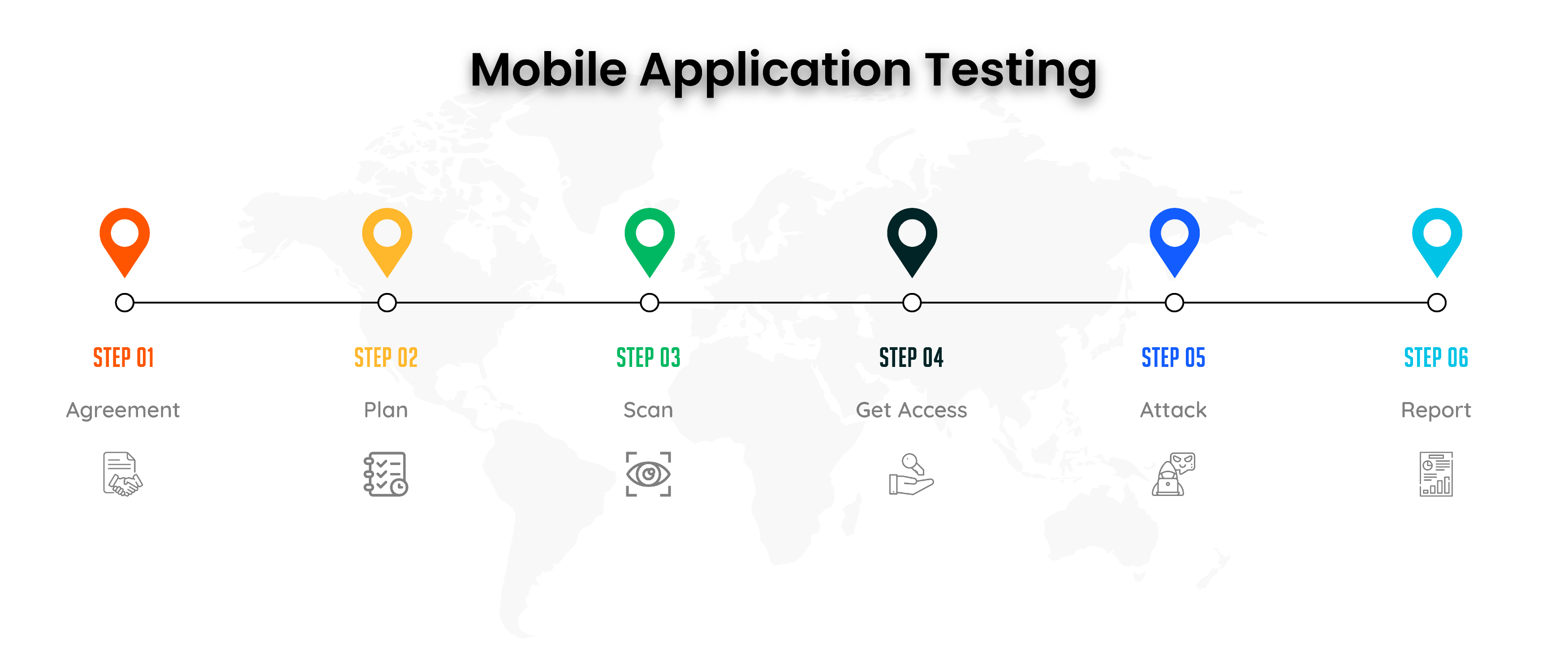MOBILE APPLICATION TESTING
Mobile Application Testing Workflow
Pre-Engagement
Our team compiles data on the application's architecture, use cases, business logic, and other pertinent details about the mobile application.
Threat Modelling
Create an application's threat profile by enumerating all potential risks and associated threats. This enables testers to create custom test plans to simulate attacks, allowing for assessing actual risks rather than generic vulnerabilities.
Mapping Applications
Identify and associate the application's data with the various aspects of the generated threat profile. Numerous parameters include the following: (a) brute-force attacks, and parameter tampering; (b) fuzzing; (c) SQLi; (d) Session IDs, time lockouts; (e) Error and exception handling; and (f) Logs.
Client-Side Attack
Client-side attack concentrate on the following areas: (a) platform interaction (b) local storage (c) encryption usage (d) binary and final analysis (e) insecure API calls.
Network Layer Attack
Attacking the network layer entails probing communication channels, capturing network traffic, and evaluating transport layer protection.
Reporting Vulnerablity
Once the assessment is complete, a detailed written report outlinin`g each observed and or exploited vulnerabilities, along with the root cause analysis and categorisation along with mitigation and confirmatory re-test certificate if the need arrives.




